Sun, June 27, 2010 | Intelligence and Terrorism Information Center
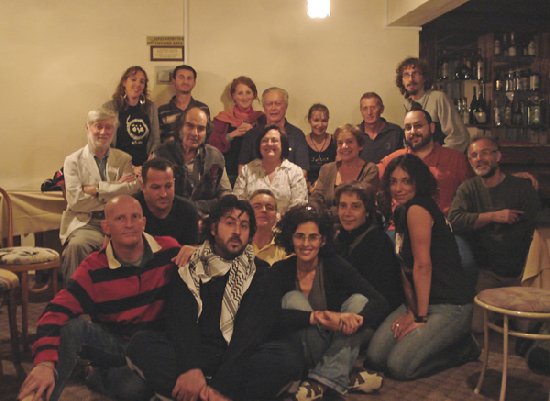
Some members and participants of the Free Gaza Movement: Top Left, Caoimhe Butterly; middle 3rd row, Nobel Peace Prize Laureate Mairead Maguire; front row left, Derek Graham (30 Oct 2008)
Inside documents of the Free Gaza movement seized in the recent flotilla expose considerable discrepancies between its strategy and tactics and its public stance. The documents prove, among other things, the attempts to conceal the aid to the Hamas administration since Hamas is designated as a terrorist organization in the US.
1. Established in 2006, the Free Gaza movement (hereinafter: Free Gaza) is a pro-Palestinian/pro-Hamas group whose stated purpose is to “break the siege” imposed by Israel on the Gaza Strip following the Hamas takeover. Free Gaza is registered in Cyprus as a human rights project and is headquartered in Nicosia. Its website says that Free Gaza has branches in 28 countries, including 11 in Europe, 5 in North America (4 in the US and one in Canada), and a branch in Israel (referred to on the movement’s website as “Palestine 1948 territories”). The organizational framework of Free Gaza also includes the International Solidarity Movement (ISM), which also took part in the latest flotilla.
2. Free Gaza played an important role in the coalition of organizations which orchestrated the latest flotilla, even though the dominant force was the Turkish IHH. Free Gaza started sending aid flotillas to the Gaza Strip in 2008. Prior to the latest flotilla, Free Gaza was able to send four other aid flotillas to the Gaza Strip:
a. August 2008: two ships departed from Cyprus and arrived at the port of Gaza on August 23 (BBC, August 23, 2008).
b. October 2008: a yacht named Dignity with 26 activists and medical supplies on board arrived in Gaza on October 29 (JTA, October 29, 2008).
c. December 2008: the same yacht, Dignity, with about 3 tons of medical supplies, attempted to penetrate the waters of Gaza but was stopped by the Israeli navy (ynet, December 30, 2008).
d. June 2009: a ship called Spirit of Humanity, which attempted to reach Gaza on June 30, was stopped by the Israeli navy near the Gaza port (Jerusalem Post, June 29, 2009).
3. The movement’s mission, as appears on its website, is to break the siege of Gaza. It also states that it will not ask for Israel’s permission for its actions, since the movement’s intent is
“to overcome this brutal siege through civil resistance and non-violent direct action, and establish a permanent sea lane between Gaza and the rest of the world” (Free Gaza website).
4. Free Gaza is now organizing yet another flotilla to the Gaza Strip. Nidal Hejazi, a Free Gaza senior official in Norway, said that the movement is now planning to acquire yet another boat from Norway to depart for the Gaza Strip as soon as possible. He said he was hoping to organize a flotilla consisting of more than ten additional boats from European countries. According to Hejazi, upon returning from Turkey on June 3, the movement started working on a list of passengers from Norway to join the flotilla, and the list will be finalized in the coming days (Hamas’ Al-Aqsa TV, June 5, 2010).
5. Inside documents of Free Gaza seized in the latest flotilla (see appendices for the unedited, complete text) deal with the movement’s strategy and with briefings given to its activists prior to the flotilla’s departure. Analysis and comparison of the inside documents to the movement’s public stance shows significant discrepancies and even contradictions between them. For example:
a. Legal aspect: a legal briefing (“legal information“) given by Free Gaza to its activists shows that the movement is well aware of the legal problem of delivering assistance to the Hamas de-facto administration in the Gaza Strip, particularly considering that the US designated Hamas as a terrorist organization. Reading between the lines also shows that while Free Gaza publicly states that the aid is for the Palestinian population in the Gaza Strip, Free Gaza is aware that, in fact, it assists the Hamas de-facto administration. Therefore, at a legal briefing for activists who took part in the flotilla, they were warned against making any statement or taking any action that could be construed as providing material assistance to Hamas to avoid being incriminated in the US and in other countries (the movement has activists in the US whose participation in the flotilla seems to contradict US law; also, Free Gaza raises funds in the US, where it has a contact man for allegedly humanitarian purposes, yet those purposes are in fact clearly political).
b. Political aspect: during the legal briefing, as a way of solving the problem of Hamas’ designation as a terrorist organization, the activists were told that Free Gaza had publicly announced that it had no political agenda, and that it was committed to “non-violent humanitarian assistance” to the Palestinian people (Free Gaza is registered as a Human Rights Project, a definition which appears on its website). However, according to an inside document found on the Mavi Marmara, the goals of the flotilla were clearly political rather than humanitarian (the minimum goals defined in the document are generating media [impact] about the blockade on the Gaza Strip and pushing foreign governments to take punitive action against Israel; delivering humanitarian aid to the Gaza Strip was not listed as a goal).
c. Response to possible scenarios during the voyage: Free Gaza drew up “defensive” scenarios for the flotilla based on the premise that the IDF would be unable to stop the boats without using force. Several tactics are listed to prevent the IDF from taking over the boat. One of the things mentioned is putting obstructions with sharp points on the deck and barricading in the wheelhouse and the engine room.
d. Although those tactics pale in comparison to the organized violence used by IHH, they are still incompatible with instructions given by Free Gaza to its activists, which categorically prohibited the use of verbal of physical violence. It therefore appears that the term “non-violent resistance”, which appears in the instructions of human rights organizations which took part in the flotilla, was open to interpretation by the various organizations and the various activists, who were eager to confront the IDF soldiers (as demonstrated by the preparations made by IHH, which also defines itself as a humanitarian organization, for a violent confrontation with the IDF).
6. What follows is an analysis of Free Gaza inside documents seized in the latest flotilla.
Appendix A
Legal briefing given by Free Gaza to passengers on the ship Challenger (it can be assumed that a similar briefing was given to Free Gaza activists on other ships)
1. A document titled “Legal Information” was seized aboard the Challenger, a Free Gaza ship. The document notes that Hamas is designated as a “global terrorist” organization by the US Treasury Department. In addition, it states that the UN has also blacklisted Hamas as a terrorist organization. Consequently, a US citizen providing “material support” to Hamas may face criminal charges in US courts. This may also pose a problem to citizens of other countries, which is why Free Gaza advises them to check the laws and regulations on dealing with Hamas in their countries.
2. Reading between the lines, it appears that Free Gaza is well aware that transporting aid to the Hamas de-facto administration, considered to be an inseparable part of Hamas by the US administration, is a violation of US law.
3. The document illustrates that Free Gaza is aware that it is legally problematic to deliver aid to the Hamas de-facto administration in the Gaza Strip, particularly in the US, where Hamas is banned.[1] Therefore, the document contains a legal briefing of sorts (“legal information“) to activists taking part in the flotilla, the main points of which are:
a. The activists from the various countries, particularly US residents, must avoid even the appearance of providing “material support” to Hamas, including its leadership.
b. Free Gaza has said publicly and repeatedly that it serves no political agenda whatsoever and that it is engaged solely in non-violent humanitarian support for the Palestinian people, not the Palestinian leadership. Under no circumstances should any participant make a public statement of affinity or admiration of any political group in Palestine (note: the public portrayal of providing humanitarian support for the Palestinian people as the movement’s goal is incorrect, since an inside document found aboard the Mavi Marmara defined the goals of the flotilla to be political, not humanitarian—see Appendix B for details).
The original document:
Appendix B
Inside document detailing the strategy and tactics of
Free Gaza in preparation for the flotilla
Overview
1. Found on one of the computers seized aboard the Mavi Marmara was the draft of an inside document (“not for distribution“) dated March 7, 2010. The document describes the goals of and preparations for the flotilla, lists problems and offers solutions.
2. Following are the main issues that appear in the document:
a. The goals of the flotilla: the goals of the flotilla as defined in the document are clearly political, contradicting the public image of “humanitarian support” which appears in the legal briefing. The “minimum goal” is to “generate a lot of media about the blockade on Gaza” and the “situation of Palestinians in Gaza”. A secondary goal is “taking legal/political action, including jail stays, to push foreign governments to do more than make statements, but to take punitive action towards Israel.” Elsewhere in the document, the goal is said to be generating media coverage and putting pressure on Israel.
b. Importance of flotilla’s success in view of Free Gaza’s financial difficulties: the document states that the movement is “in a bad financial position” for the current flotilla and for other flotillas to follow: “There is virtually no likelihood of us [i.e., the movement] being able to get more funds for a mission that does not result in tangible results for Gaza.”
c. “The Galloway Factor“: George Galloway is a former British pro-Hamas parliament member who played a key role in organizing Lifeline-3, the previous aid convoy to the Gaza Strip. The participants of the previous convoy confronted Egyptian authorities, subsequent to which George Galloway was declared a persona non grata in Egypt. According to the Free Gaza document, George Galloway no longer assists Free Gaza as much as he did in the past (for his own reasons). The document notes that Galloway may not be able to get much support for a flotilla if the ships do not reach Gaza’s shores. In the view of Free Gaza, this factor makes it all the more important for the flotilla to reach Gaza.
d. Flotilla passengers: the passengers on behalf of Free Gaza were divided into three categories: celebrities and VIPs, parliament members (from national parliaments and ideally not backbenchers), and union leaders. Free Gaza considered increasing the number of passengers since it had permission to bring its passengers on the IHH passenger ship (i.e., the Mavi Marmara). That combination of passengers was designed to increase the media impact of the flotilla.
e. Potential scenarios for the voyage: the document analyzes several “defensive” scenarios, based on a premise that is the fundamental guideline of the flotilla: “We will not turn back. The only way for Israel to stop us is to use force” (from a sub-chapter titled “Mission Strategy”). The scenarios raised in the document can be summarized as follows:
1. Aerial boarding (of soldiers): the document examines how boarding can be prevented. One of the methods mentioned is putting obstructions with sharp points on the deck, making it too dangerous for the soldiers to board (note: the behavior agreement distributed by Free Gaza to its activists prior to the launch of the flotilla says that the activists shall not use verbal or physical violence and that the mission was designed to support the “non-violent resistance of the Palestinians”. The inside document makes it clear that the term “non-violent resistance” is open to interpretation that may change the non-violent and “defensive” resistance into a violent and offensive one, which was what happened aboard the Mavi Marmara).
2. If IDF soldiers do manage to board the ship, the Free Gaza activists were to focus on two areas: the wheelhouse and the engine room. The document says that the wheelhouse had to be made “impenetrable”, which would require replacing glass with bullet-proof glass, replacing doors with steel doors, and adding locks.
3. Using a tugboat to prevent the ship from coming to Gaza. In that case, the ship would try to outmaneuver the tugboat and reach the Gaza Strip, even though its chances of success were unclear.
4. Opening fire (by IDF) or using explosives to neutralize the ship. Free Gaza’s “defensive option” for that scenario was putting VIPs on the cargo ship’s deck (hoping their presence would deter the IDF soldiers).
5. Blocking the cargo ships while giving the passenger ship permission to proceed. In that case, the question was whether the mission was worth continuing with only the passenger ship. The decision was to be made only after the launch of the flotilla.
f. Behavior on the passenger ship: the author of the document believes that there would be a way to deter the kind of boarding Free Gaza had with the Spirit of Humanity (a ship sent by the movement on June 30, 2009, which was stopped by the Israeli navy near the Gaza port). This required putting 1.5-meter steel poles over the sides of the ship. A more likely option was that the Israelis would try to ram the ship, as they had done before.
g. Support from various bodies and organizations: letters from unions and letters from parliaments and governments calling on Israel not to interfere must be prepared; ambassadors in Tel-Aviv must be called on to request no interference from Israel (the countries mentioned are Venezuela, Chile, India, South Africa, Ireland, Belgium, Britain, and Norway); UNIFIL and NATO must be asked for inspection and escort; live broadcasts from the ship must be arranged (the document details a media plan to be implemented in the various stages of the flotilla’s journey).
The original document
DRAFT – NOT FOR DISTRIBUTION – UPDATED 3/07/2010
Free Gaza Strategy
There are now two parts to the strategy – one for the overall FG situation and one for the mission. The two are not inseparable, as it is prudent to think not only of how we conduct this mission, but also what happens the day after.
CURRENT STATUS
Boats
2 new passenger ships for high profilers
1 FG boat for activists
1 Cargo ship from IHH
1 passenger ship from IHH (500 pax)
1 passenger ship from ECESG
pending –
cargo ship (FG)
cargo ship (Greece)
passenger ship (Turkey)
passenger ship (Greece)
cargo ship (Sweden)
ship (Indonesia)
Finances
The FG accounts (including what is being held aside and what is held elsewhere), seems to have approximately 50,000. From that, at least X will be needed up front for the FG cargo ship and other costs related to holding onto the passenger ships that FG possesses.
There is currently no money available for the mission itself for FG, though efforts are being made to secure those funds.
Ports
It is clear that Cyprus will not be a point of departure. Turkish ships can leave from Turkey. FG and Greek ships (if any) can leave from Greece, though the situation in Greece will have to be monitored in the event that the economy dives again and more strikes and unrest follow. The FG cargo ship can leave from its position now (if we get the ship).
Timing
The earliest we will know about cargo ship is March 20, and maybe not until March 31. We still do not know what, if any, kind of repairs will be needed and how long it will take. For this ship to be in position to join rest of flotilla, at least 2 weeks are needed. Therefore, if we are using this cargo ship, it is unlikely we can be ready to go with passengers from port before April 25.
Given the above factors, it seems that at as FG, we should next consider the overall FG situation, in order to make decisions that will affect the mission itself.
OVERALL FREEGAZA SITUATION
As stated above, we are in a bad financial position for the mission and for afterwards, if we go ahead with the purchase of the cargo ship. We are also in a limited position in terms of trying to raise more funds if this mission is not successful, in that there is virtually no likelihood of us being able to get more funds for a mission that does not result in tangible results for Gaza. Getting media, creating pressure on Israel, etc. are all good, but unlikely to yield greater funding opportunities. This is particularly true if we end up not in possession of one or more of our ships, or with ships damaged, regardless of what legal strategy we pursue.
Additionally, we cannot ignore the Galloway factor, which practically means that while he may not find as much support as he has in the past, for various reasons mostly of his own doing, and while he may not be able to get as much support for a flotilla if ours does not reach Gaza’s shores, the fact is that he has far greater outreach ability by virtue of his name and the willingness of key people to support him because of his political position as an MP and what he has said/done vis-à-vis Arab governments. Thus, whatever effort we make in the wake of our mission, unless we arrive in Gaza, will undoubtedly be in competition with Galloway, and so far, we have not been able to meet that challenge in terms of funds raised, having a network operating to get funds at that level and to do so in a timely manner.
Now, moving on to other considerations that factor in the financial picture.
Given the responses to the email that was sent out asking for each of us to identify our minimum goal for this mission and the minimum ship requirement for launching this mission, the responses lined up pretty much in accordance with this position:
MINIMUM GOAL:
The goal of this mission is to generate a lot of media about the blockade on Gaza and the illegal/criminal nature of it, as well as the situation of Palestinians in Gaza. Secondly, but connected is the goal of taking legal/political action, including jail stays, pushing foreign governments to do more than make statements, but to take punitive action towards Israel.
Our position, then, is that reaching Gaza, while our intention is not our minimum strategic goal.
CARGO SHIP:
This point is seemingly this point is moot now. The IHH has a cargo ship, so we have a minimum of 1, which was the majority opinion of those who responded.
The question now is, does it make sense for FG to get a cargo ship – see below for explanation and for where we need to make a strategic decision.
HOLD 2 BOATS FOR IMMEDIATE FOLLOW UP:
There is basically a split among those who responded to this, so no decision here.
See below for further explanation why this might make sense, though given the minimum goal for the mission.
For strategic consideration for next mission and FG overall
Given the consensus mission goal, there needs to be decisions derived based on that position, regarding the other points listed above.
Since we have confirmation that we have 1 cargo ship, the pressing question becomes does FG need to get this other cargo ship that is in auction, now that there is competition and that it is potentially going to set us back in terms of timing for mission? I list here some Pros/Cons, but I think we need a decision on this ASAP. (I have tried not to factor in hypothetical situations, as this becomes a never-ending exercise, and should not be how we base this decision – for every ‘if’ on one side, we can add an ‘if’ on the other).
PROS/CONS of having a FG Cargo Ship
| Pros | Cons |
|---|---|
| 1. Allows more cargo to be brought | 1. Cost involved is quite high (management) and a drain on resources that we are not secured of |
| 2. Allows for more groups to participate in providing cargo for mission | 2. Owning the ship post-mission will be costly and require full-time attention |
| 3. One more ship that is part of flotilla | 3. Given the minimum goal for the mission, there does not seem to be a strategic reason to have more than 1 cargo ship |
| 4. Having 2 cargo ships will necessitate a bigger effort by Israel to stop the flotilla | 4. Will require additional expense to secure more cargo, which will require more fundraising |
| 5. While we can bring some material, this is still largely a symbolic measure that until proven that we can deliver, will not be seen as a viable undertaking – having the one cargo ship from IHH allows for the symbolic value already and for testing the viability of this tactic |
OPTION 1 – GET FG CARGO SHIP
If we decide on getting this cargo ship, then we proceed accordingly and must stay in this position of being unable to take more concrete action with regard to date, cargo, etc. until we know for sure that this is our ship. Given that the idea of pursuing a back-up cargo ship was pretty much shot down, then we might yet end up in a position of not having a FG cargo ship.
OPTION 2 – NO FG CARGO SHIP
If we decide to not get this ship, then we have to first make sure it is OK with Malaysia, explaining why it is not strategic, and why we are still achieving what we/they want by having the IHH cargo ship. We can use those funds in part then, to procure cargo, which would allow Malaysia to still ‘take credit’ (if that is a concern) for providing building materials to Gaza. If we decide on not getting this ship, then we should be able to move more quickly towards setting time, procuring and getting cargo in place (from departure point of IHH ship), etc. Not getting the ship also frees up funds for FG work in the mission – not just the cost of the cargo ship, but also the cost of the management company and the cost of cargo.
When considering which option, I think we really need to consider financial/logistic aspects of this, notably:
– if we are planning to take legal action, political work and do media work for an extended period after a mission that is stopped, then we need to have funds to do so;
– for those of you who think that regardless of what happens on this mission that FG will continue to send missions to Gaza in some way, then FG must have financial resources to be able to do so;
– having a cargo ship in possession will require ongoing costs and management of the ship, and someone from FG will have to be involved in this.
In terms of the prospect of holding 2 passenger boats back and have them ready for an immediate launch in the event that Israel stops the flotilla, the question to consider is does this fit into the minimum strategic goal for the mission. If the flotilla is not stopped, then these boats will be ready to head to Gaza with a follow up flotilla when the initial flotilla returns from Gaza. Again, some Pros/Cons are (these are only applicable for consideration in planning for if the flotilla is stopped):
| Pros | Cons |
|---|---|
| 1. Having an immediate follow up mission will generate more media and keep the drama of the situation in the forefront | 1. Requires additional land crew and passengers willing to be in a wait and see position; including some key FG personnel to not join initial flotilla |
| 2. More media likely to participate in follow up | 2. Likely will not have VIPs on board, but perhaps is not necessary |
| 3. Will keep media focus overall on mission, including on those in flotilla who are taken to jail | 3. Requires keeping funds in reserve for this part of the overall mission, and thus potentially the need for having more money in hand to start with |
| 4. Will give tangible action for politicians and governments to support and could result in enabling the kind of political work we need without having us have to go back to capitals to seek action |
OPTION 1 – KEEP 2 BOATS BACK
If we decide to do this, then we need to identify from now which 2 ships, and start identifying passengers for this part of the mission, so they are clear from start. We should also prepare land crew and PR material for the backup teams, all of which should be in place and ready to go within hours of word of what happens with the flotilla when it is confronted by Israeli military.
OPTION 2 – DO NOT HOLD BACK BOATS
Continue our work as is.
Overall FG position
In considering the above, we need to consider not just for this mission but for the position of FG overall. Thus making the strategic choices above will impact not just the mission but the ‘day after’. To continue this work in a strategic manner, which requires keeping pressure on Israel, leveraging that by winning allies (organization and political) and generating tangible results (beyond statements of support), will mean that we have to be in position to do so. Choosing from the above choices should therefore be done with an eye to the mission and an eye to beyond the mission.
Mission Strategy
Passengers
We have decided that for passengers, there would a prioritization of:
1. Celebrities, VIPs
2. MPs (from national parliaments and ideally not those on fringe)
3. Union Leaders
Given the capacity of the IHH passenger ship, we can now accommodate many more passengers, so we do not have pressure to limit spots, but we should still maintain a kind of minimum number of passengers that we want to get per the three categories above.
The sheer number of passengers that we can bring on the IHH ship may result in a different tactic by Israel in terms of detention. To remove that many passengers to shore and to process them would be both a logistic challenge and also a costly maneuver by Israel, require long man-hours, processing time/cost and a challenge to their detention capacity in detention centers that are already crowded with refugees and asylum seekers.
It is thus possible, and potentially likely, that Israel will use a different tactic if it brings the ship to port, which would be to hold the passengers on the ship itself. This is something Israel has developed plans for in terms of housing the detainees it has, but has to implement. We need to strongly consider this possibility and what we could to in terms of this kind of maneuver. However, it should not necessarily change the strategy of the mission prior to capture, though we can take steps to prepare the ship with material/items that could be useful for such a situation.
MISSION STRATEGY
Basic Principle – We will not turn back. The only way for Israel to stop us is to use force.
Resistance?
On this next mission, we will be traveling with VIPs. Is there a likelihood that they will be willing to take action to resist interference from Israel? Not likely, though we can ask. At this point, we can assume no, and move forward in planning. Once we invite, we can check again.
If the minimum goal for the mission is media attention, etc. then is there a point of having any kind of resistance, including pre-emptive measures to prevent them from taking the ships?
We need a concrete decision here in order to make plans, and in order to work with our partners to develop clear understandings of what we are doing. We also would need to have time to make ships ready for such action.
If we do agree to pre-emptive action, then we can consider that there are basically 2 ways the Israelis have boarded ships – with speedboats the way they boarded the Spirit, and with a helicopter the way they boarded the Lebanese cargo ship.
Since we will have both kinds of ships, we must anticipate both types of boardings.
There is a fundamental question to answer before choosing any strategy – do we want to do all we can to keep the ships in our hands, given that if the Israelis take the boats the chances of us launching another mission become near impossible.
Assuming that we want to keep the boats, then these are possible strategies:
SCENARIOS AT SEA
In the event of an aerial boarding, one option is to try to prevent the boarding itself. If the soldiers are coming from the air, then there might be steps to take that can dissuade them from making such a boarding. Put obstructions on the deck of various heights and with sharp points might make such a landing too risky.
If the soldiers do land on the ship, then our choices would need to focus on two areas – the wheelhouse and the engine room. For the wheelhouse, we would have to try to make it impenetrable. This would require switching any glass to bullet-proof glass, replacing doors with steel doors (if not already steel) and adding locks that cannot be broken by conventional tools. For the engine room, we will have to check with the crew about what can be done in terms of safety. And we will have to investigate what possible options would be available.
In any event, even if we prevent a boarding or a take-over of the controls of the ship, Israel can still bring a tugboat out to force our ship. I do not know at this point how that would work if we still maintain ability to maneuver the ship if the tugboat can still force us.
If it can, then the only question left in terms of trying to prevent a takeover of the ship is how long it would take them to bring a tugboat out and if we would have enough time to get to Gaza. If they stop us at the 20-mile limit, that means we need 3 hours at the speed of the cargo ship to get to shore. Assuming the tugboat would come from Ashdod at 15 knots per hour, it does seem that we could conceivably have enough time to get to Gaza.
The Israelis might then open fire on the ship, though would not do so if their soldiers were on board. Another mechanism using some kind of explosive might be used to dismantle the ship, but that would be a serious escalation from the kind of force they have been using to date. Even hitting the Dignity is different than firing or using explosives. That said, we have to take this into consideration.
If we are putting VIPs on board the cargo ship, then they and the crew must be willing to go along with this strategy. If the VIPs are not, then we have to decide if we want to not put VIPs on the cargo ship and thereby have this defensive option open to us.
Another scenario might be that the Israelis try to block the cargo ship while letting the passenger ship go. Assuming we are not successful in preventing the cargo ship from being taken but the passenger ships are not interfered with, then the question to us is whether our mission is worth continuing with only passengers. This is something we have to decide as a board. If we decide to forego going to Gaza, then it seems the only option at that point would be to take the passengers and follow the cargo ship and force the Israelis to deal with us trying to enter Israel. The likelihood is that they would simply detain everyone and move for deportation. We can then put into motion whatever strategy we choose for a DETENTION SCENARIO.
For the passenger ship, it does seem that there would be a way to deter the kind of boarding we had with the Spirit. This would require putting steel poles pointing out from all directions on the boat out over sides of the ship, thus creating a kind of ring of steel poles jutting out 5 feet or so from the ship. I do not know how this would affect the handling of the ship, but assuming it is do-able, then the question is what would be the Israeli response. One option they would have – given they would not get close enough with the speedboats to get onboard – would be to come up alongside and ram the steel poles to break them off. But I think that would not necessarily work for them as they may break but not completely and would leave what remains as a continued deterrent to their boarding. A more likely option is that they would simply ram the ship, like they did with Dignity. Dennis will have to speak to how this new ship would respond to such a ramming. The decision then rests with us in terms of do we want to cause them to escalate. We can also take similar action as with the cargo ship in terms of barricading the wheelhouse and sealing the engine room, per safety issues. But we are not immune on this ship from ramming.
Other Mission Needs
SUPPORT
Letters from Unions
Letters from Governments and Parliaments calling on Israel to not
Interfere
Get Ambassadors in Tel Aviv to Meet with Israeli Ministers to Request no
Interference (Venezuela, Chile, India, S. Africa, Ireland, Belgium, UK, Norway)
Ask UNIFL for inspections and escort
Ask NATO for inspections and escort
Live Broadcast from Ship – use Sailor 500 & have trained people to use
MEDIA
3-prong strategy
– pre-mission media, including launch events
– during mission
– entry or interference
Pre-Mission
– Press Conference in Ireland for Cargo Launch
– Press Conference with Passengers from Port
– Op-Eds by Passengers in their Home Countries
– Op-Eds by Board of Advisors
– Media Briefing Papers on Humanitarian Situation in Gaza, International Law, Goldstone Report & Blockade, One-Year Later, etc.
– prep work for stories that we want to push with media
– website and YouTube materials
During Mission
– set up Press Center in Jerusalem/Ramallah or Athens or London
– Broadcast from Boat
– Media Interviews with VIPs from Boat – try to schedule in advance on SAT phones
– Media Helicopter from Cyprus
– Symbolic Launches from around the world
Entry
– prepare for stories we want told from Gaza – assuming limited time, what is critical to tell; also stories connected to our mission like Green Gaza, etc.
Interference
– Publish prepared statements by government officials, celebrities, VIPs, etc. condemning Israel’s actions and in support of Free Gaza Movement
– publish prepared Op-Eds for newspapers from passengers
– Press conference in Jerusalem (at a consulate?) and/or Tel Aviv airport or at embassy (if immediate deportation)
– Immediate filing for return of ship in Israeli court and foreign court where ship is registered
– file lawsuit against navy for aggression
– Malaysia to introduce General Assembly debate on issuing a UN Resolution for ‘Uniting for Peace’ Resolution 377, calling for international action to open Gaza
JAIL
If this mission is stopped and we are taken to jail, then it is extremely unlikely (and we should plan on it not happening) that VIPs and media will agree to a potential long-term jail strategy. We can put it out in the media that our plan is to stay in jail until we are allowed to go to Gaza, but unless we are serious about it, then it is very harmful to credibility to not follow through. We CAN file for immediate release based on the lack of charges (which is how we were held last time) and petition the court for visas to Israel for all of the passengers. This would allow us to use the court for more PR work and would potentially put Israel in the position of having to charge the passengers, which would also require taking a legal position on Gaza.
If passengers are detained on the 500-person passenger ship, then the likelihood is that any deportation hearings will be done at the port in a makeshift hearing room, although we also need to look at what the legal situation would be if the passengers were not turned over to civilian jurisdiction. That is, if we are kept at a naval base, and in military custody, what legal avenues are available. This should be sorted out prior to mission in the formulation of a legal strategy.
For passengers on the Free Gaza ship, then the question is are they ready for jail stay and to what end? Is Free Gaza in a position to strategically support those staying in jail, particularly if we are going to try to launch another mission/take advantage of the PR opportunities that will abound by virtue of this action. What is minimum number of volunteers needed for jail-solidarity team for media/legal work? Who is going to be available post-mission for touring/public speaking?
Appendix C
A document titled “Free Gaza Movement” found in the
possession of one of the movement’s activists
1. Attached is a list of Free Gaza liaisons and their contact information based on a document found in the possession of one of the activists (with ITIC comments added). One of them, Ramzi Kysia, is located in the US.
| Name | Position | Phone | |
|---|---|---|---|
| Greta Berlin | On-board coordinator | 33607374512 (French number) | iristulip@gmail.com |
| Niamh Moloughney (Ireland) | (Included on the list of Free Gaza board members, coordinators etc.) | 353857747257 (Irish number) | freegazaireland@gmail.com |
| Ramzi Kysia | Washington coordinator | 17039945422 (US number) | ramzi@freegaza.org |
| Alex Harrison | On-board coordinator | 35796489805 (Irish number) | duvdaa@gmail.com |
| Angie Pal | Ship passenger | 35796399715 (Irish number) | |
| Derrick | Free Gaza coordinator in Cyprus | delgraham@gmail.com | |
| Therese McDermott | Logistics administrator on Crete | 306989943191 (Greek number) | |
| Giorgos Klontzas | One of the captains | 306944505400 (Greek number) | |
| Caoimhe Butterly (Ireland) | ISM contact | 353876114553 (Greek number) | Sahara78@hotmail.co.uk |
| Ism Gaza | ismgaza@yahoo.com | ||
| Eva Bartlett (Canada) | ISM contact in Gaza | Evabartlett@hotmail.com | |
| Bianca Zammit | ISM volunteer in Gaza who was injured | biancazammit@gmail.com |
[1] The Israeli organization Shurat Hadin (Israel Law Center, ILC) sent a letter to US Attorney General Eric Holder, asking him to investigate whether US law was violated by the organizations which funded the American flotilla. The authors of the letter ask to investigate whether Free Gaza was involved in money laundering and violation of US law (for details, see Shurat Hadin’s website: israellawcenter.org).



 RSS
RSS

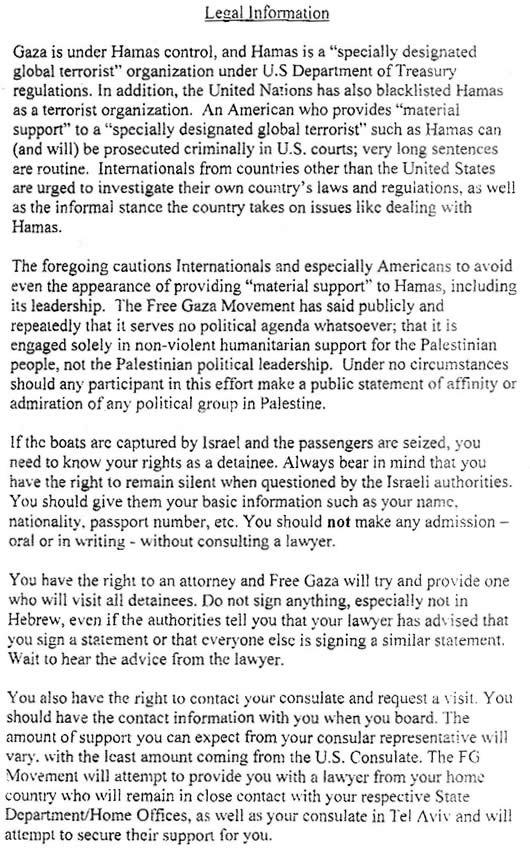

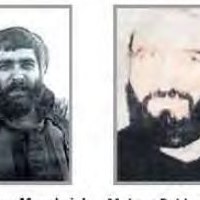

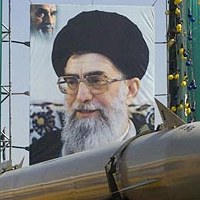
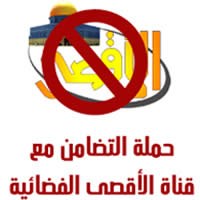




The Free Gaza Movement and its Political Agenda #israel #free #gaza #flotilla #ireland http://j.mp/cgoSle
RT @CrethiPlethi: The Free Gaza Movement and its Political Agenda #israel #free #gaza #flotilla #ireland http://j.mp/cgoSle
RT @CrethiPlethi: The Free Gaza Movement and its Political Agenda #israel #free #gaza #flotilla #ireland http://j.mp/cgoSle
RT @CrethiPlethi The "Free Gaza" Movement and its Political Agenda #israel #free #gaza #flotilla #ireland http://j.mp/cgoSle
RT @CrethiPlethi: The Free Gaza Movement and its Political Agenda #israel #free #gaza #flotilla #ireland http://j.mp/cgoSle
“@Sabba_Yossi: RT @CrethiPlethi The "Free Gaza" Movement and its Political Agenda #israel #free #gaza #flotilla #ireland http://j.mp/cgoSle”
[…] The Free Gaza Movement and its Political Agenda | Middle East … […]
The Free Gaza Movement and its Political Agenda | Middle East Affairs Information Center | Analysis In depth information http://ow.ly/24pQO
[…] Visit link: The Free Gaza Movement and its Political Agenda | Middle East … […]
[…] Link: The Free Gaza Movement and its Political Agenda | Middle East … […]
[…] here to see the original: The Free Gaza Movement and its Political Agenda | Middle East … SHARE THIS Hide Sites « PreviousFreegaza – Demands to […]
[…] For further information and the full text of the document, see the June 28, 2010 article, “Inside documents of the Free Gaza movement seized in the recent flotilla expose considerable discrep…” by the Meir Amit Intelligence and Terrorism Information […]